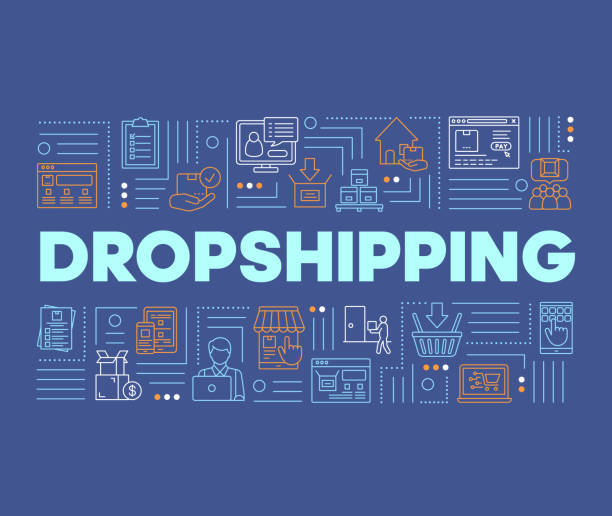Dropshipping Solutions: Empowering E-commerce Entrepreneurs
Dropshipping is an innovative retail fulfillment method that has revolutionized the way businesses operate in the e-commerce space. Unlike traditional retail models, where merchants must invest heavily in inventory, dropshipping allows sellers to list products on their websites without holding any physical stock. When a customer makes a purchase, the order is forwarded to a third-party supplier who then ships the product directly to the customer. Dropshipping suppliers reduces overhead costs, minimizes risk, and allows entrepreneurs to focus on marketing and customer service.
Benefits of Dropshipping
Low Startup Costs
One of the most appealing aspects of dropshipping is the low barrier to entry. Entrepreneurs can start their businesses with minimal financial investment since they do not need to purchase inventory upfront. This significantly lowers the initial risk and allows more people to venture into e-commerce without substantial capital.
Flexibility and Scalability
Dropshipping offers unparalleled flexibility. Business owners can operate from anywhere with an internet connection, making it an ideal solution for digital nomads and those seeking work-life balance. Additionally, scaling a dropshipping business is relatively easy. As sales increase, the business can grow without the constraints of managing and storing larger quantities of inventory.
Wide Product Selection
With dropshipping, merchants can offer a vast array of products without worrying about storage space or inventory management. This enables businesses to quickly adapt to market trends and consumer demands by adding new products to their online stores. The ability to offer a diverse product range can attract a broader customer base and increase sales potential.
Key Components of a Successful Dropshipping Business
Finding Reliable Suppliers
The foundation of any successful dropshipping business is a network of reliable suppliers. Partnering with suppliers who provide high-quality products, consistent stock levels, and efficient shipping is crucial. Using supplier directories such as AliExpress, SaleHoo, and Oberlo can help identify reputable suppliers. Additionally, forming direct relationships with manufacturers can ensure better pricing and exclusive deals.
Choosing the Right E-commerce Platform
Selecting the right e-commerce platform is essential for the smooth operation of a dropshipping business. Platforms like Shopify, WooCommerce, and BigCommerce offer user-friendly interfaces, robust integrations, and customizable templates. These platforms also provide various plugins and apps specifically designed for dropshipping, helping to automate order processing and inventory management.
Optimizing Product Listings
Well-optimized product listings are vital for attracting and converting customers. This involves writing compelling product descriptions, using high-quality images, and implementing effective SEO strategies. Detailed and accurate product information builds trust with customers and improves search engine rankings, driving more organic traffic to the store.
Marketing Strategies for Dropshipping
Social Media Advertising
Social media platforms like Facebook, Instagram, and TikTok offer powerful advertising tools that can drive targeted traffic to dropshipping stores. Creating engaging ads and leveraging the platforms’ targeting capabilities can help reach potential customers based on demographics, interests, and behaviors. Influencer marketing on social media can also be an effective way to promote products and build brand awareness.
Content Marketing
Content marketing is a valuable strategy for building brand authority and driving organic traffic. Creating high-quality blog posts, videos, and infographics related to the products being sold can attract and engage customers. This content can be shared across social media platforms and optimized for search engines to improve visibility and reach.
Email Marketing
Email marketing remains one of the most cost-effective ways to retain customers and encourage repeat purchases. Building an email list and sending regular newsletters with promotions, new product announcements, and personalized recommendations can keep customers engaged and drive sales. Automated email campaigns, such as abandoned cart reminders and post-purchase follow-ups, can further enhance customer retention.
Overcoming Challenges in Dropshipping
Managing Customer Expectations
One of the primary challenges in dropshipping is managing customer expectations, particularly regarding shipping times and product quality. Clear communication about shipping policies and expected delivery times is essential to prevent dissatisfaction. Providing excellent customer service and promptly addressing any issues can help build trust and maintain a positive reputation.
Handling Returns and Refunds
Returns and refunds can be more complicated in a dropshipping model since the products are shipped directly from the supplier to the customer. Establishing a straightforward returns policy and working closely with suppliers to manage returns efficiently is crucial. Ensuring that the supplier’s return policies align with those of the dropshipping store can streamline the process and reduce friction.
Competing in a Saturated Market
The low barrier to entry in dropshipping means that the market can become saturated quickly. To stand out, dropshipping businesses need to focus on niche markets, unique value propositions, and exceptional customer experiences. Differentiating the brand through superior customer service, exclusive products, or innovative marketing strategies can create a competitive edge.
Conclusion
Dropshipping presents a compelling opportunity for entrepreneurs to enter the e-commerce market with minimal risk and investment. By finding reliable suppliers, choosing the right e-commerce platform, and implementing effective marketing strategies, businesses can build successful and scalable dropshipping ventures. While challenges exist, they can be overcome with careful planning, clear communication, and a focus on customer satisfaction. As the e-commerce landscape continues to evolve, dropshipping remains a viable and attractive business model for aspiring online retailers.







